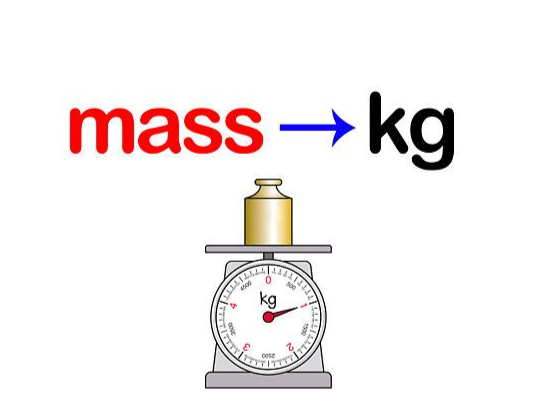Mass in physics is a fundamental concept that explains how objects behave and interact. Understanding mass helps us see how things move, why some objects stay in place while others move easily, and how energy is related to mass. In this blog, we’ll explore what is mass in physics, how it affects motion and inertia, and its role in Newton’s laws.
We’ll also break down the connection between mass and momentum, as well as energy through Einstein’s famous equation, E=mc². Let’s dive into how mass shapes the world around us.
What is a mass in physics?
“In physics, mass is the measure of an object’s matter, influencing how it resists motion and interacts with gravitational forces around it. The SI unit of mass is kilogram (kg), used to measure the amount of matter in an object.”
How Mass Affects Motion and Inertia
Mass plays a crucial role in motion and inertia. In physics, inertia is an object’s resistance to changes in its state of motion—whether it’s moving or at rest. The greater an object’s mass, the more inertia it has, meaning it requires more force to move or stop.
Examples:
- Pushing a Car vs. a Bike
Imagine trying to push a car and a bicycle. The car, having much more mass, requires significantly more force to get it moving compared to the lighter bike. This is because the car’s mass gives it more inertia. - Stopping a Moving Truck
A heavy truck traveling at high speed needs more force to stop than a small car moving at the same speed. Here, the truck’s larger mass increases its inertia, making it harder to bring to a halt.
In both cases, mass directly affects the force needed for any change in motion, illustrating how mass influences inertia in real-world scenarios.
Role of Mass in Newton’s Laws of Motion
1. Newton’s First Law of Motion
Newton’s First Law, also known as the Law of Inertia, states that an object will stay at rest or continue moving in a straight line unless acted upon by an external force. Mass determines the amount of inertia an object has; objects with more mass resist changes in motion more than objects with less mass. For instance, a heavy car is harder to push into motion from a stop than a light bicycle.
2. Newton’s Second Law of Motion
The Second Law defines the relationship between force, mass, and acceleration: F=ma. Here, mass directly affects the force needed to move an object. If an object has greater mass, it requires more force to achieve the same acceleration as an object with less mass. For example, to accelerate a truck as quickly as a bicycle, significantly more force is needed due to the truck’s higher mass.
3. Newton’s Third Law of Motion
The Third Law states that for every action, there is an equal and opposite reaction. Mass plays a role here in terms of the effects of these forces. If a small and large object collide, both experience the same force, but the object with less mass will experience greater acceleration. This is why a ball bounces back quickly when it hits the ground, while a more massive object like a car does not move much if it hits a wall.
Mass influences how objects respond to forces, the effort needed to change their motion, and the outcomes in action-reaction scenarios.
Mass in the Context of Energy (E=mc²)
Mass and energy are connected by Einstein’s equation, E=mc². This means mass can change into energy, and even a small amount of mass holds a lot of energy because “c” (the speed of light squared) is a huge number.
Example:
In nuclear power plants, a small amount of fuel mass is converted into large amounts of energy. This is why nuclear power can produce so much electricity with little fuel.
How Does Mass Affect Vehicle Performance?
- Acceleration and braking: Heavier cars require more force to accelerate or stop.
- Fuel efficiency: Lighter vehicles consume less fuel, making them more eco-friendly.
- Safety: Higher mass can provide better crash protection but may increase stopping distance.
Why Choose Tutorhelpme Physics tutors
Expert Tutors: Our Physics tutors have strong backgrounds in physics and excel in teaching complex concepts in simple terms.
Personalized Learning: We tailor our sessions to meet each student’s unique needs, ensuring a more effective learning experience.
Flexible Scheduling: Students can choose session times that fit their busy schedules, making it easier to balance study and life.
Interactive Learning: Our online platform encourages engagement through interactive tools, making physics fun and interesting.
Comprehensive Resources: We provide a variety of study materials, practice problems, and assessments to reinforce learning.
Affordable Prices: Our tutoring services are competitively priced, making quality education accessible to everyone.
Proven Results: Many of our students see significant improvements in their understanding and grades.
Read More What is mass and Weight ? Differene Between Mass and Weight
FAQ’s
How does mass affect fuel efficiency in vehicles?
In the UK’s transport sector, lighter vehicles consume less fuel and produce lower emissions, supporting eco-friendly policies. This is why electric cars are designed to be lightweight for better efficiency.
Why do objects with more mass require more force to move?
According to Newton’s Second Law (F = ma), an object with more mass needs greater force to accelerate. This is why moving a lorry requires more energy than moving a bicycle.
How does mass affect sports performance?
In rugby, heavier players use their mass to resist tackles.
In athletics, sprinters benefit from lower mass for faster acceleration.
In boxing, mass determines weight classes to ensure fair fights.
How does mass affect space travel?
The European Space Agency (ESA) carefully calculates spacecraft mass. Reducing mass lowers fuel requirements, making launches more efficient and cost-effective.
Can mass be converted into energy?
Yes! Einstein’s E=mc² explains how mass converts into energy. In UK nuclear power plants, a small amount of uranium mass produces large amounts of electricity.
How does mass impact air travel?
Airlines calculate luggage and passenger mass to optimise fuel consumption. Overloading increases fuel use, affecting flight efficiency and environmental impact.

